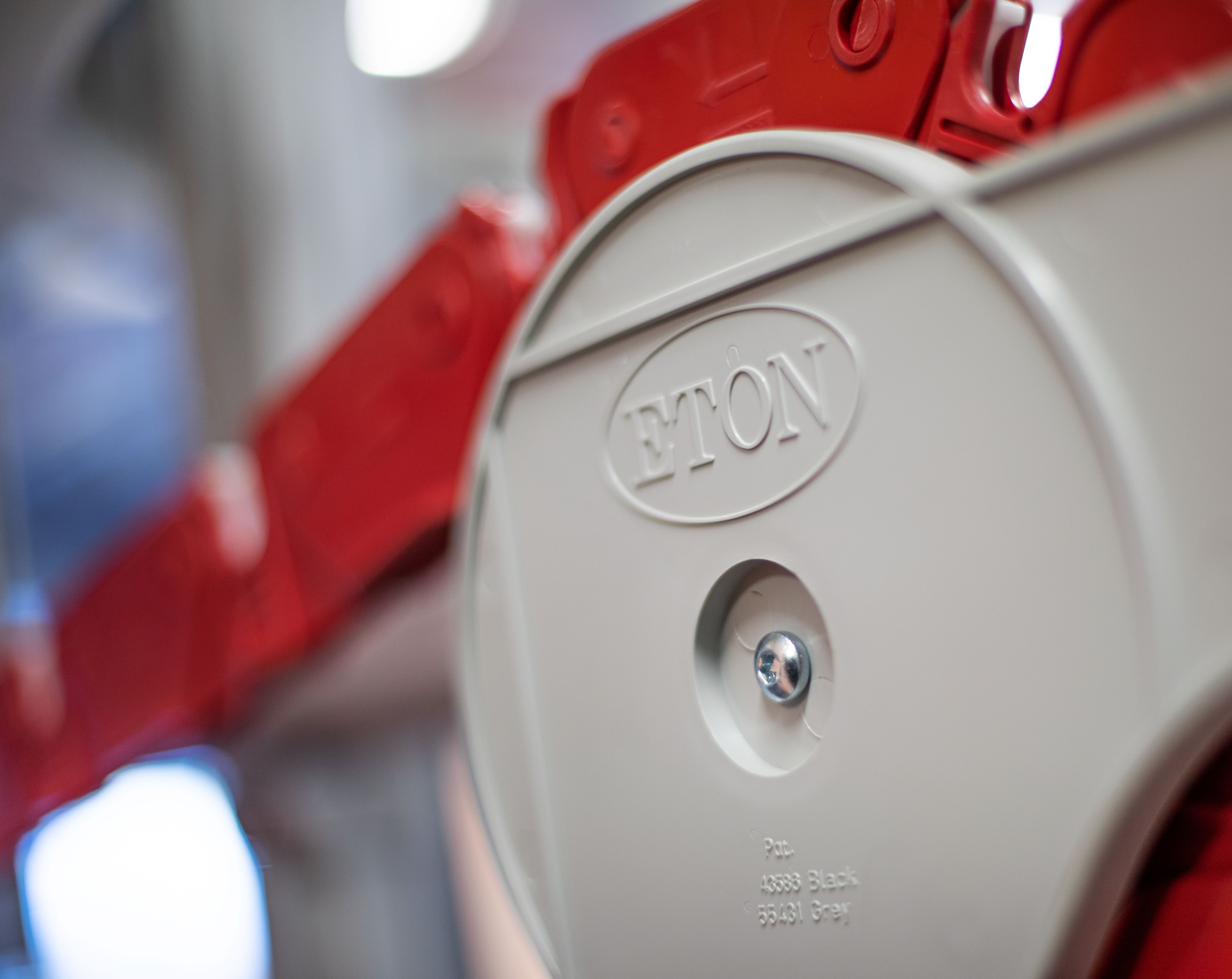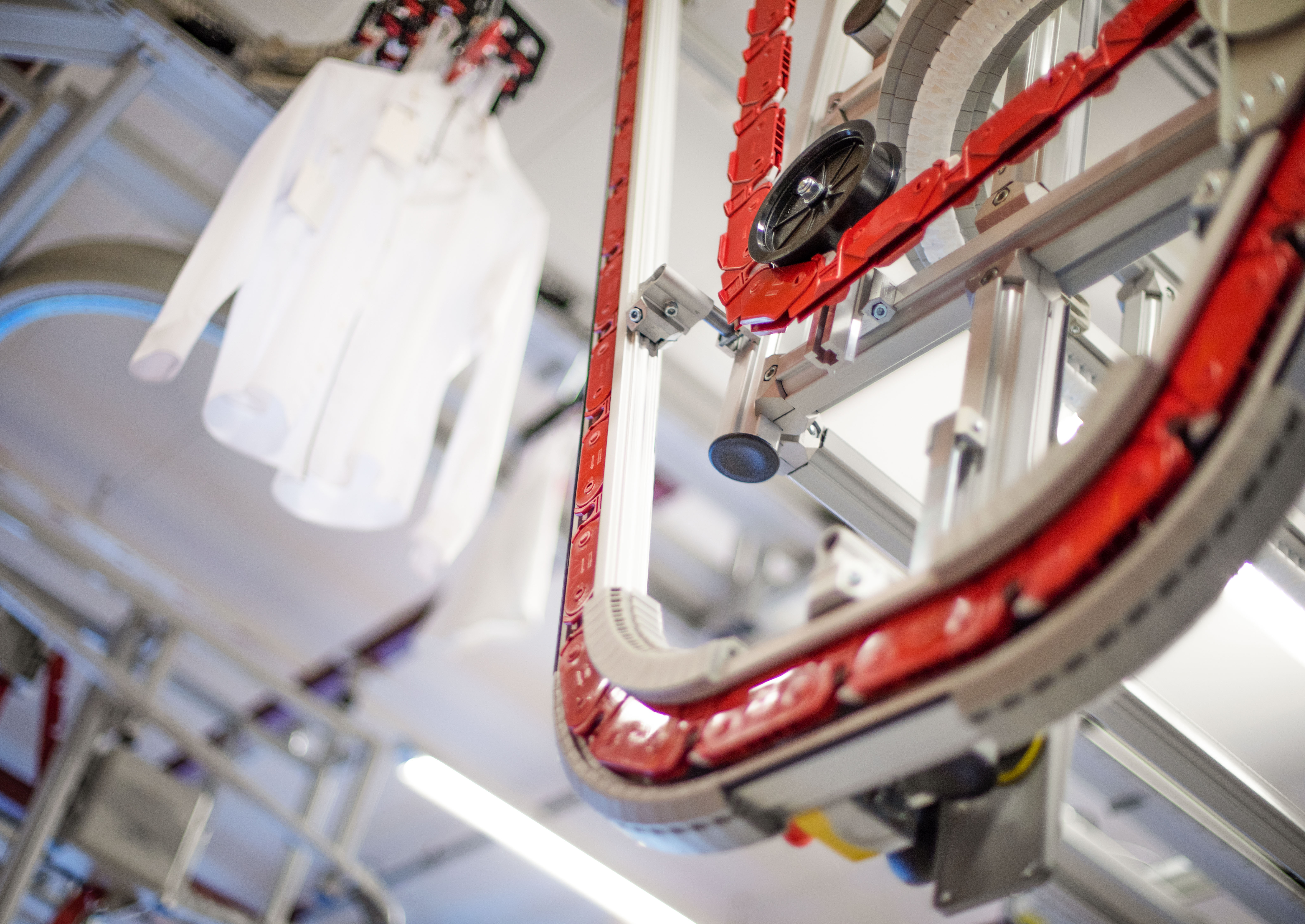
- Automated Remake Machine
- Innovative Techniques

What if automation could help scale the remake and repair business models? If the selection and handling of post-consumer waste could be done by a machine and product information be generated automatically? Elevate remake from craft to the next industry and thus increase circularity of garments?
The projects Mikrofabriker and Circular Movement investigate the application of new and existing technology in order to facilitate new circular business models for the fashion and textile industry. In the “Remake Machine” the entire flow for remake has been automated through software development, the use of AI and integration of existing systems. An operator registers the garments in the system and simultaneously a product is created on an e-commerce platform. The Eton system, an overhead conveyor system for single items, transports the garments to an automated photo studio that snaps pictures of the garments directly to the e-commerce platform. Simultaneously the AI scans for defects and either directs the
garment to the correct operator or workstation for upgrading or sends the garment to the buffer awaiting an upgrade.
The remake machine is designed as an on-demand solution for automatic upgrading of garments through design; operations are not carried out before there is an order. The machine can also be used to handle deadstock for mass upgrading or to handle one garment type with multiple remake designs.
Science Park Borås, Ledai AB, Automation region, Intelligent bridge, Eton systems AB
New innovative resource efficient technology
Profitable and sustainable circular business models
Reduction of waste
In recent years, the global demand for textile fibers has witnessed a significant upswing, driven by a growing population and the expanding fashion and apparel industry. At the same time there is an escalating problem of textile waste. A considerable portion of discarded textiles ends up in landfills, causing environmental challenges. It’s imperative that we shift our perspective and begin to see textile waste as a valuable resource.
By adopting a circular economy approach, we can unlock the potential of textile waste as a secondary raw material. Amidst the growing concerns of textile waste, the concept of efficient and automated microfactories is emerging as a beacon of hope. These microfactories, equipped with cutting-edge technologies such as 3D printing, robotic assembly, and AI-driven design, hold the potential to revolutionize the way we view textile production, remake, and repairs.
These microfactories can play a crucial role in making remake and repairs not only environmentally
responsible but also economically viable.






Thinking about technology means thinking about politics and culture, technology on its own will
solve nothing. Technology does however give us a vehicle to envision a system of 0% waste and 100%
circularity with positive impact on society and natural systems. Use of digital tools can minimize
waste in the design process, product development and retail operations. Digital tools enable
manufacturing close to the end consumer that can significantly reduce over production. It can also
help consumers of fashion and textile products to make smarter decisions.
All group objects:
The production of a textile product is a major factor affecting the environmental footprint of the final product. Textile production consists of many stages; there is the production of the fiber, yarn, and fabric, product assembly and post-treatments at all stages. Each one of these stages needs to be considered in order to improve the environmental footprint of the textile product.
One challenge when working with textile production and sustainability is having comprehensive knowledge about the processes and having detailed information available about all stages of production.
Ongoing research and initiatives are finding new techniques and methods for measuring, documenting, and sharing information from the production stages. This makes it possible for brands to more easily document and communicate their products’ environmental footprints, including the production stages.